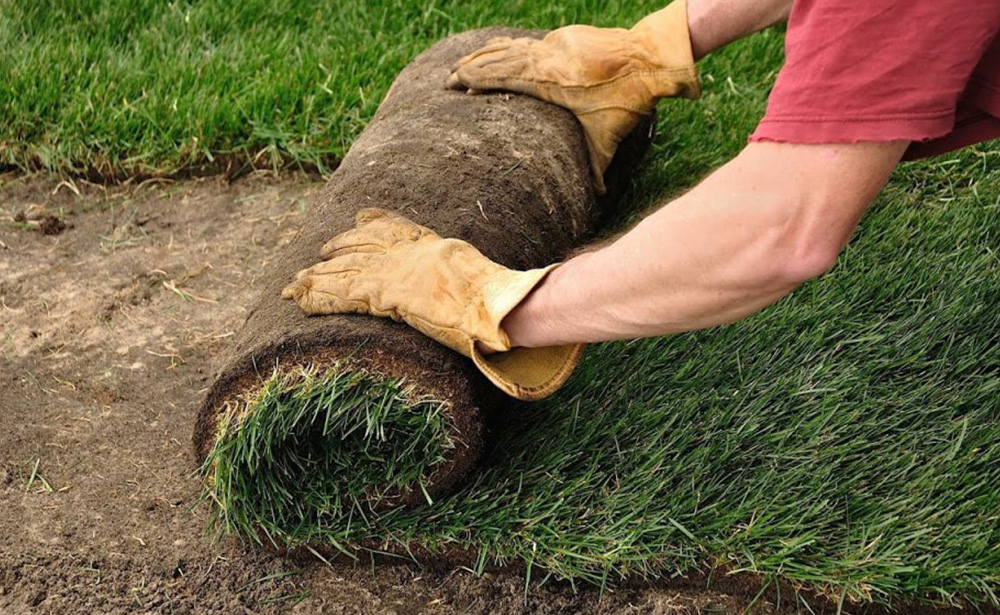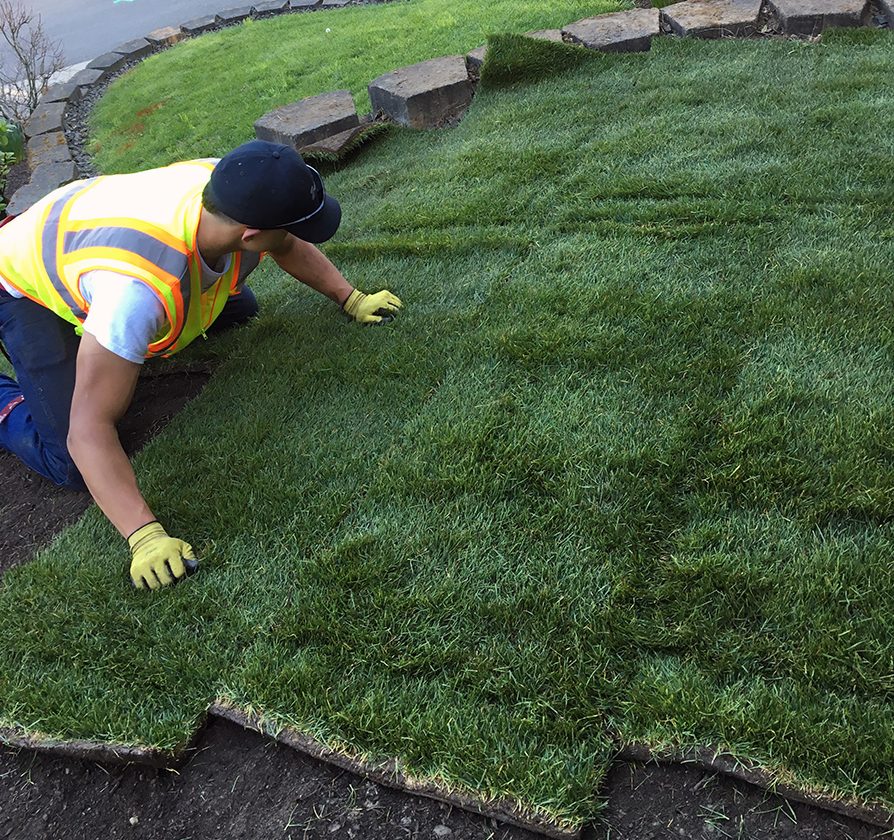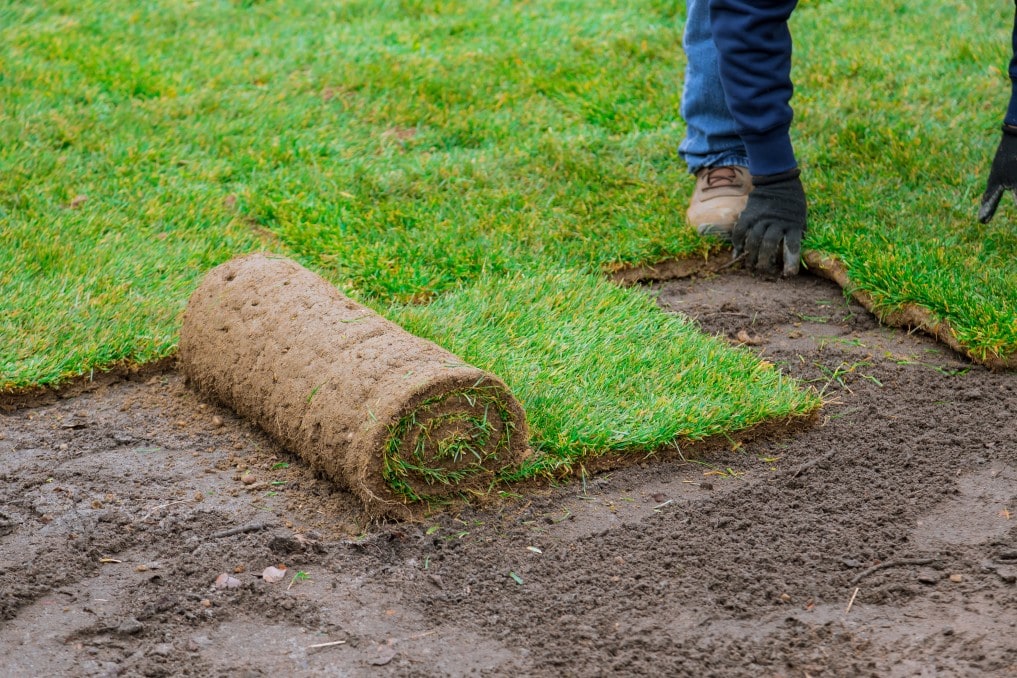Installing new lawn
Installing new lawn is a very big decision and should be looked at as new flooring in your home. There are several questions to consider when making your decision about installing new lawns in your Tampa home.
Lots of weeds in the grass?
This is the main question we seek to answer as it can save hundreds and sometimes thousands of dollars to homeowners because only affected areas of your landscape need to be replaced with new sod. The best way to determine what you can save is to destroy the weeds that do not belong.
Grass mixed with weeds
You have a better chance to salvage some of your lawn if your weeds are mixed in with grass. The key is to have grass throughout the yard so that it can regrow in areas where weeds are eliminated.


Grassy areas with concentrated areas of weeds
This situation is when you have patches of grass with no weeds; however, you also have patches of weeds. When the weeds are eliminated, large bare patches of soil would remain and be difficult to maintain. As a result, these type of situations call for installing sod or plugs to allow the desired plant material to take and spread.
Time to resod?
Before trying to resod you must consider several methods of installing a new lawn. The most common known by most homeowners is by sod, which are sections of grass covered surface soil held together by matted roots. Most sod is installed using front door mat sized sections installed in the area intended for the yard. Sod plugs are an economical approach to installing a lawn. Sod plugs allow for a smaller install area, but this method leaves gaps between the plugs which fill in as the plugs send out runners. However, a homeowner must be patient and manage the weeds that will attempt to fill in the bare spots while the grass plugs fill in.
How did my grass die?
At one point, all modern homes had a lawn. However, a lawn can decline over time because of over watering, over fertilizing, poor mowing practices, etc. All of these practices can severely weaken a lawn into decline and eventual ruin.
How will you be using your lawn?
Green industries best management practices (GI-BMP) suggests that homeowners consider how a lawn will be used for outdoor activities. So, Victory Cuts Landscaping and Design asks you to consider the following uses and conditions before installing a new lawn:
- Playground for children
- Pets
- Outdoor gatherings
- Shaded areas

What is your property’s rain and sunlight conditions?
A key GI-BMP is the concept of right plant, right place, so it is best to assess the sunlight conditions of your Tampa landscape. A key characteristic that affects Tampa lawn care is the amount of tree cover over your yard. Tampa lawn care is focused on maintaining primarily St. Augustine grass. Most varieties of St. Augustine grow well in shade, but will require more water requirements to do well in full sun conditions.
What do you want your grass to look like? The answer is simple…..GREEN & LUSH!!!!
Below you will find a description of some varieties of grass in the Tampa Bay Area:

Floratam St. Augustine
By far this is the most popular type of lawn in Tampa, Florida. It is popular because many homeowners, builders, and installers do not know that there are other varieties of St. Augustine developed since the 70s. Floratam was one of the original types of St. Augustine and as a result, it cannot tolerate cold, shade tolerance, chinch bugs, fungus, and other diseases. Floratam looks like crab grass, but is different. Floratam variety does well in full sun (<6 hours) and most soil types, such as sand, loamy and clay soil. Most importantly, it must be maintained at 3.5 to 4 inches for healthy growth and longevity.
Seville St. Augustine
Seville is a semi-dwarf St. Augustine with a compact low growth habit. Seville is probably one of the most shade tolerant amongst all St Augustine grasses. Exhibiting dark green color, Seville does well in the full sun as well as in moderate shade with 6-7 hours of sunlight throughout the day. Council Growers recommends mowing Seville at 2-2.5 inches in height. While Seville, like most St. Augustine varieties, can be susceptible to chinch bugs, gray leaf spot and other turf diseases, this is still a great grass for the Tampa Bay and Sarasota areas. If you have a shaded yard and your St. Augustine grass is thin, it is probably because you have a non-shade variety of St. Augustine. The Seville variety of St. Augustine is the most tolerant of shade and can also thrive in full sun. If there was one variety of St. Augustine to be cut low, it would be Seville. It is recommended that Seville be cut at 2 to 2.5 inches in height.


Sapphire St. Augustine
Tired of the typical St Augustine grass, one of the newest released St Augustine’s on the sod market in Tampa Bay, Sapphire is a great alternative. Sapphire has great color, grows a little denser than other St. Augustine’s, and it will recover from physical damage quicker than the average Floratam lawn. It is an attractive turf grass with fast horizontal growth and a long leaf blade that has a fine leaf appearance. Sapphire is considered a semi dwarf St Augustine due to its compact nature. It has a pleasing blue-green color with excellent color retention. Sapphire is hard-wearing in our demanding climate. It will tolerate salt, shade, and drought performing well with less maintenance, fertilization, and water. Sapphire is definitely a superior homeowner’s grass to the typical St. Augustine due to improved wear recovery and reduced weed problems.
Empire Zoysia
Drought Tolerance: A typical St. Augustine lawn may hold its color longer into a drought or freeze, but once it turns brown it will most likely not survive the extreme conditions. However, Empire Zoysia can go dormant during drought or freezing temperatures without severely damaging the sod. Zoysia will break its dormancy once water is applied and warmer temperatures are present and will return to a favorable appearance. Chinch Bug Resistance: Empire Zoysia has an advantage over St. Augustine because it is more resistant to chinch bugs. This increased resistance reduces the amount of chemicals you will need to care for your lawn. Finer Grass Blade: Empire Zoysia can be viewed as a cross between Bermuda and St. Augustine, in terms of how thickness and softness the grass blades. This is a grass that is well suited for people who enjoy using their yard for entertainment and activities. Moderate Shade Tolerance: Empire variety of Zoysia is better adapted to shade than Floratam St. Augustine that is found in most Florida lawns. This is also an advantage because of the fungus issues associated with grass located not only shade, but in wet conditions.
